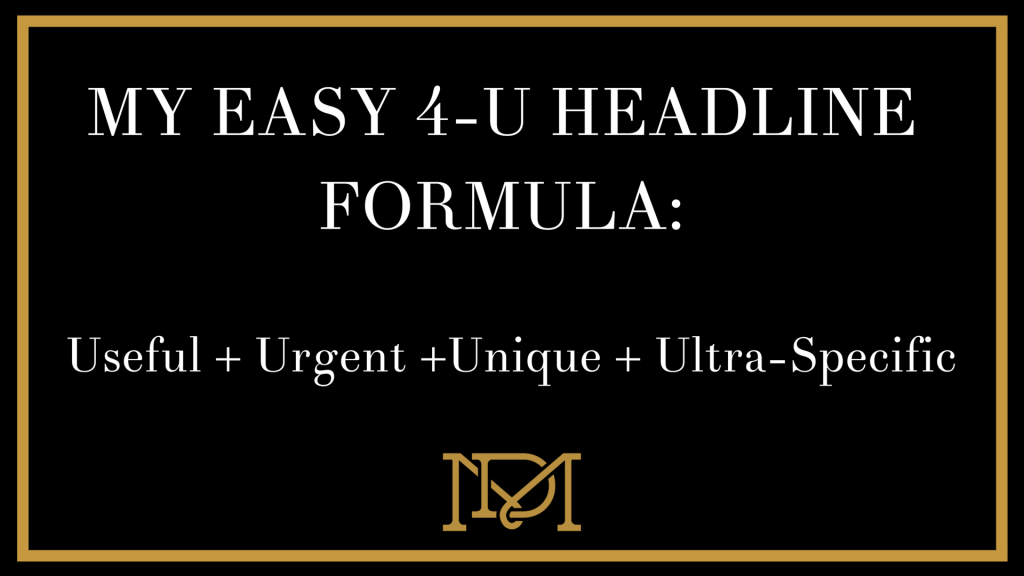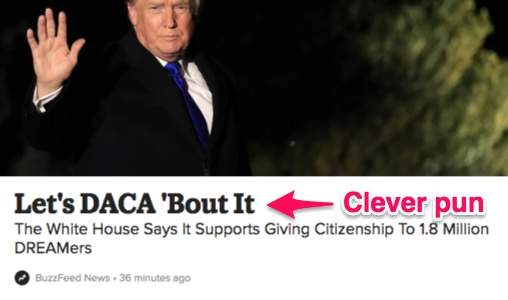How to Write Headlines People Can’t Help but Click [Formulas Inside]

There’s more than one reason why sites like BuzzFeed, Upworthy, or PopSugar get so many clicks, views, and site visitors.
But the top reason is that all of these sites use unique, powerful, and engaging headlines that make people want to click on their content and view the whole story.
There isn’t one right way to write a headline, but certain types of headlines have proven themselves to be successful over the years.
By following similar “formulas,” you’ll find yourself writing headlines that will persuade people to click over to your content and read your copy.
Here’s how to write powerful headlines that people can’t help but click.
Why headlines matter
Headlines are the first thing that people see when it comes to your writing. They will either grab the attention of readers and site visitors or bore them.
That’s why you need to get them right. Your prospective customers will make their first impressions about your brand from them.
So your headlines shouldn’t focus on selling to the reader. Instead, they should entice and draw readers in to finish the entire article.
You also need to make sure that your headlines are an accurate representation of your article and your company’s values.
Most Americans believe the headlines that they see. Fake headlines or headlines that are too “click-baity” can lead to giving your brand a bad wrap.
.png)
The good news is that if you stick to the formulas in this article, you can avoid using misleading, false, or boring headlines that can hurt your business.
The first formula you need to know about is the 4U formula.
Always use the 4U formula
As many as 80% of people will read the average headline when they come across it, but only 20% of people will actually read the entire blog post.
If you want to boost your odds of people actually clicking on your headlines and reading an entire post, you have to make your headline as intriguing as possible.
Melanie Duncan’s 4U formula is perfect for compelling readers. With the 4U formula, you have to make your headline “useful, urgent, unique, and ultra-specific.”

Useful
Think about the headlines that you actually click on when you’re scrolling through your news feed. They’re probably usually the headlines that offer something that can help you.
You need to offer people the same useful value in your own headlines. Start out by understanding what will be useful to your audience, and then offer them what they need.
These headlines should identify a problem and offer a solution. So should the articles that go along with them.
This works whether your company is service-based or product-based. Both products and services can solve readers’ problems.
Examples of headlines that are useful include how-to articles and listicles like this one from Wonder How To.
Urgent
Clever bloggers want to create a sense of urgency in their headlines to push people to click.
Think FOMO here. (For the uninitiated: Fear Of Missing Out.)
There is so much trying to grab our attention online. It’s easy to ignore something that we think isn’t time-sensitive.
But when something is urgent, readers will click on it to get the information right away. They don’t want to miss out on exciting, helpful, or informative information that they need right now.
Urgency is the hardest of the four U’s to capture, and it might not always apply to your specific article topic.
If you’re going to skip over any of the 4 U’s, this is the one to think about leaving out.
Examples of urgent headlines include titles like “Avoid THIS Mistake Before It’s Too Late” or “Do XYZ in Just 2 Weeks With This One Simple Trick.”
Traditional news outlets use urgency in their headlines all of the time. Just check out this one from Fox News.
Unique
People love rare and unusual phrases. They stick out like a sore thumb and pique people’s interest so that they just have to click.
Anything that you can do to make your headline stand out in an oversaturated online world will help.
Think about focusing on wordplay, puns, and interesting topics. Buzzfeed is notorious for this.

Ultra-specific
Have you ever wondered why so many headlines these days have numbers in them? It’s because they are ultra-specific.
Readers like to know exactly what they can expect if they click on a headline. The best headlines take specific ideas and break them down one step further.
For example, don’t just write about foods that you should avoid. Talk about common foods to avoid. And don’t just mention home decor ideas, talk about do-it-yourself home decor ideas.
Again, this is all about understanding what will be useful to your audience. Here’s an example of an ultra-specific headline I used in the past:
When you make sure that all of your headlines are useful, urgent, unique, and ultra-specific, you’ll come up with better headlines for every article that you write.
Headlines that push people to read because they offer an answer to problems they have.
You can also pass your headlines off as a guide to get people interested.
Give away the big benefit
The promise in your headline is what will give people the push that they need to read. They need to know exactly what’s in it for them.
The headline needs to convince them that there’s a benefit to them taking time out of their day to look at your content.
You need to really know your target audience to create a headline with this formula.
Even if people don’t visit your site because of the headline, they will at least know what your best selling point is.
This is as simple as writing a few headlines like “Make Your Own Email Template in Minutes” or “Fast and Easy Ways to Cook Bacon.”
Huffington Post gave away the big benefit of their post quite well in this headline:
The biggest benefit of these headlines is that they can save readers time.
You can also give away the benefit within a headline if you want to offer readers something in exchange for their time instead, like “Get a FREE E-book at The End of This Blog Post.”
There are more to this than this
follow ClassicHub Digital Marketing for more post
Please kindly Upvote this Post and leave a comment